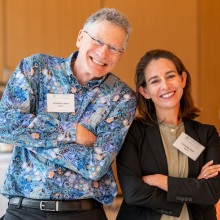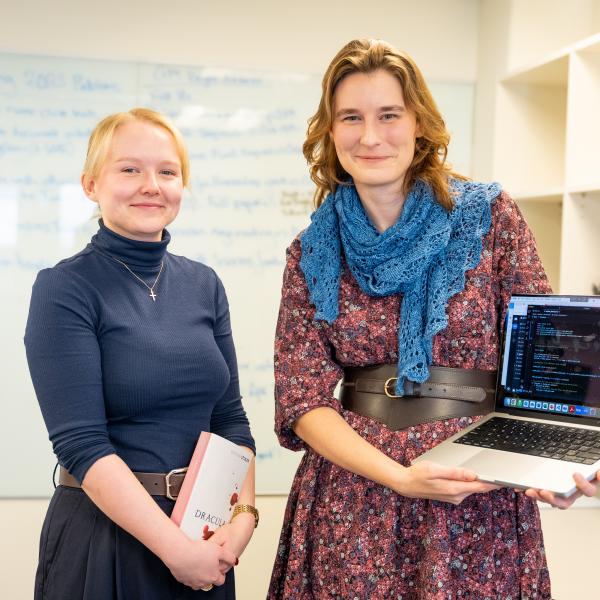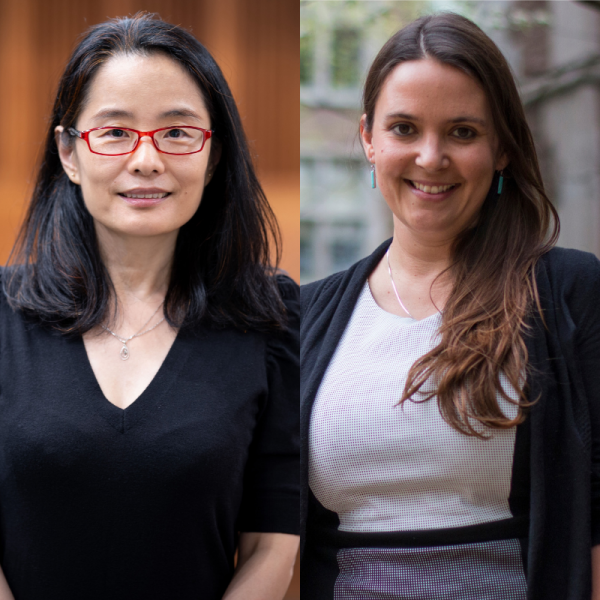The Living Earth Collaborative — a three-way partnership between the Missouri Botanical Garden, Saint Louis Zoo, and WashU — convened a symposium to imagine a St. Louis that lives in harmony with its natural surroundings.
University of Virginia professor Tim Beatley doesn’t keep office hours – he keeps “tree hours.” When his students visit to discuss their classwork, they meet with Beatley under an old white oak tree on campus, ditching the traditional trappings of academia for a setting steeped in nature.
Addressing a symposium audience convened by the Living Earth Collaborative in September at the Missouri Botanical Garden, Beatley explained why his tree hours aren’t just a personality quirk — to him, they’re biologically essential.
“You could make a pretty good case that we are better human beings when we have nature all around us,” Beatley said. “Nature is not optional at all, but rather necessary to living a happy, healthy, and meaningful life.”
Beatley is the founder and executive director of Biophilic Cities, a group that collaborates with a global network of partner cities — including the city of St. Louis — to find innovative ways of merging natural and urban environments. His presentation included images of cities where trees and skyscrapers comingle, and where rivers wind through city centers undisturbed.
His keynote speech served as the aspirational heart of the Living Earth Collaborative’s symposium, “Making St. Louis the Nature City of the 21st Century.”
Initially formed in 2018 as a partnership between WashU, Missouri Botanical Garden, and the Saint Louis Zoo, the LEC underwent a strategic visioning process throughout 2023 to refine its approach. September’s symposium marked the group’s first major event following that intensive period of self-assessment, and its collaborative environment emphasized forging strategic alliances to bolster biodiversity within the St. Louis region.
More than 150 conservations, academics, and other industry professionals attended, with a roster of guests that extended well beyond the LEC’s three partner organizations. Presenters led deep dives into sustainable development, tree restoration, and invasive species removal during the morning session. Attendees then split into six working groups for the afternoon, brainstorming ideas to address the St. Louis area’s connections with water, heat, biodiversity, and other topics.

“The event exceeded even our most optimistic hopes,” said Jonathan Losos, William H. Danforth Distinguished University Professor and co-director of the Living Earth Collaborative alongside Crickette Sanz. “It was wonderful having such great presentations by such a diverse set of speakers, and the working groups set the stage for what promise to be great, region-wide initiatives.”
In his symposium-opening address, Missouri Botanical Garden president Peter Wyse Jackson noted that the United Nations’ recently ratified Global Biodiversity Framework provides a roadmap for cities that are looking to patch their relationships with the natural ecosystems that surround them.
“Here in St. Louis, we now have an internationally agreed upon objective around which we can align our efforts,” Wyse Jackson said. “It’s all very well to have a plan, but now we must implement it. By leveraging our collective expertise, we can expand the scope of activities to encourage biodiversity in St. Louis and engage a broader group of stakeholders.”
But reimagining St. Louis as a “nature city,” as the symposium’s title suggested, requires grappling with a complex puzzle of human systems that are rarely optimized around native plants, animals, or habitats. While there are numerous groups within the city, county, and surrounding region that have long been working to bridge the gaps between the urban and natural worlds, the symposium aimed to build upon and consolidate those efforts.
Paul Weatherford, Senior Planner for Long-Range Planning with St. Louis County, presented on the environmental aspects of the county’s new comprehensive plan, its first in 40 years. Creating that plan forced the county to grapple with the harsh realities of its infrastructure and sustainability efforts. But assessing those flaws doesn’t mean accepting them as permanent or inevitable.
“When you go outside, what you see wasn’t given to us from on high,” Weatherford said. “We made decisions to build what we created. And we can make decisions to build something different.”
So how does St. Louis build something different, something more akin to the Biophilic Cities highlighted in Beatley’s talk? The afternoon’s working groups began to assemble the building blocks of that answer. All six groups coalesced around the concept of engaging the broader St. Louis community in their work, with an emphasis placed on securing public buy-in to new conservation projects and improving access to natural spaces.
The working groups planned to continue collaborating after the symposium’s conclusion, with the goal of building a more robust regional network based around conservation.
“We saw people talking to people not from their organization,” said Glenda Abney, vice president of sustainability at the Missouri Botanical Garden and one of the symposium’s organizers. “We saw people exchanging business cards, and that’s exactly what we wanted to happen.”
Learn more about the Living Earth Collaborative on its homepage.





